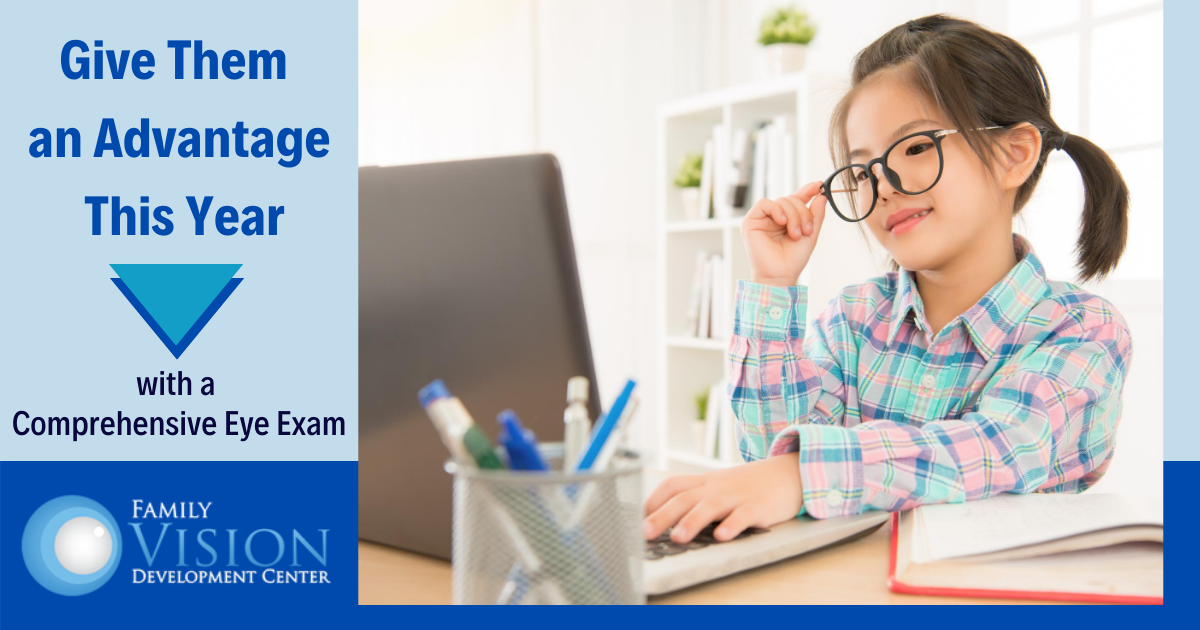When school starts this year, it will look very different than ever before. Kids will need to adapt to new school routines, which might include remote learning, modified in-person classrooms, or a combination of the two. Obviously, this has the potential to cause added stress for your student, no matter their grade level. The last thing your child needs is to have a vision disorder further complicating things and making it more difficult to keep up with the new changes. A vision issue can absolutely affect a child’s ability to learn, either at school or at home. Make sure your student has every opportunity to be successful, by detecting and treating any vision disorders as early as possible.
Vision Disorders Can be Detected in a Comprehensive Eye Exam
A comprehensive vision exam is much more thorough than a standard screening, and is the best way to diagnose vision disorders as early as possible. Some common disorders found during an exam that can affect a child’s reading ability, concentration or overall success in school include:
Amblyopia (lazy eye) – this disorder occurs when the eyes and brain do not work together properly, and vision in one eye becomes affected. Over time, the brain begins using the stronger eye more frequently, which causes the vision in the weaker eye to become worse. This can result in poor depth perception. At times, it may cause the weaker eye to drift in and out.
Accomodation (focusing) disorder – this type of disorder affects a child’s ability to focus their eyes properly, especially at near distances. When this vision disorder is present, a child may struggle with blurred vision, eye discomfort or headaches, blinking or excessive rubbing of the eyes. Understandably, reading, writing assignments and close computer work can become very difficult.
Strabismus – this type of vision disorder occurs when the eyes are not aligned properly. It can be characterized by an inward, outward, upward or downward turning of one or both eyes. It is important to note that this condition may be constant or intermittent, and the issue may not be largely obvious. In these cases, an exam is the best way to detect a problem. A misalignment of the eyes can result in double vision, eye strain and headaches, and can greatly affect a child’s reading ability and self-esteem if the eye turn is very large.
Convergence insufficiency – this condition is characterized by the inability to move and focus both eyes inward on close objects. A child would often notice the symptoms when reading or doing other close work. These symptoms can include double vision, headaches, eye strain, squinting, closing or covering one eye to look up close or difficulty reading or concentrating.
Vision Therapy Can Help Resolve These Vision Disorders
Typically, a vision disorder, such as those described above, will not go away on its own. One very effective form of treatment is a personalized vision therapy program. The providers at Family Vision Development Center are highly skilled and have advanced training in these customized in-office programs. Known as a kind of physical therapy for the visual system, vision therapy can help to retrain the eyes and brain though a series of eye exercises in order to help patients recover normal visual skills.
Schedule Your Appointment Now
Many vision disorders often go undetected in the absence of a comprehensive vision exam. Of course, the longer a child goes without treatment, the worse the condition can get. Now that school is starting, make sure they are able to keep up! Call our office at 630-862-2020 to schedule your appointment or visit us online to learn more about our family practice.
Additional information can be referenced here and here

